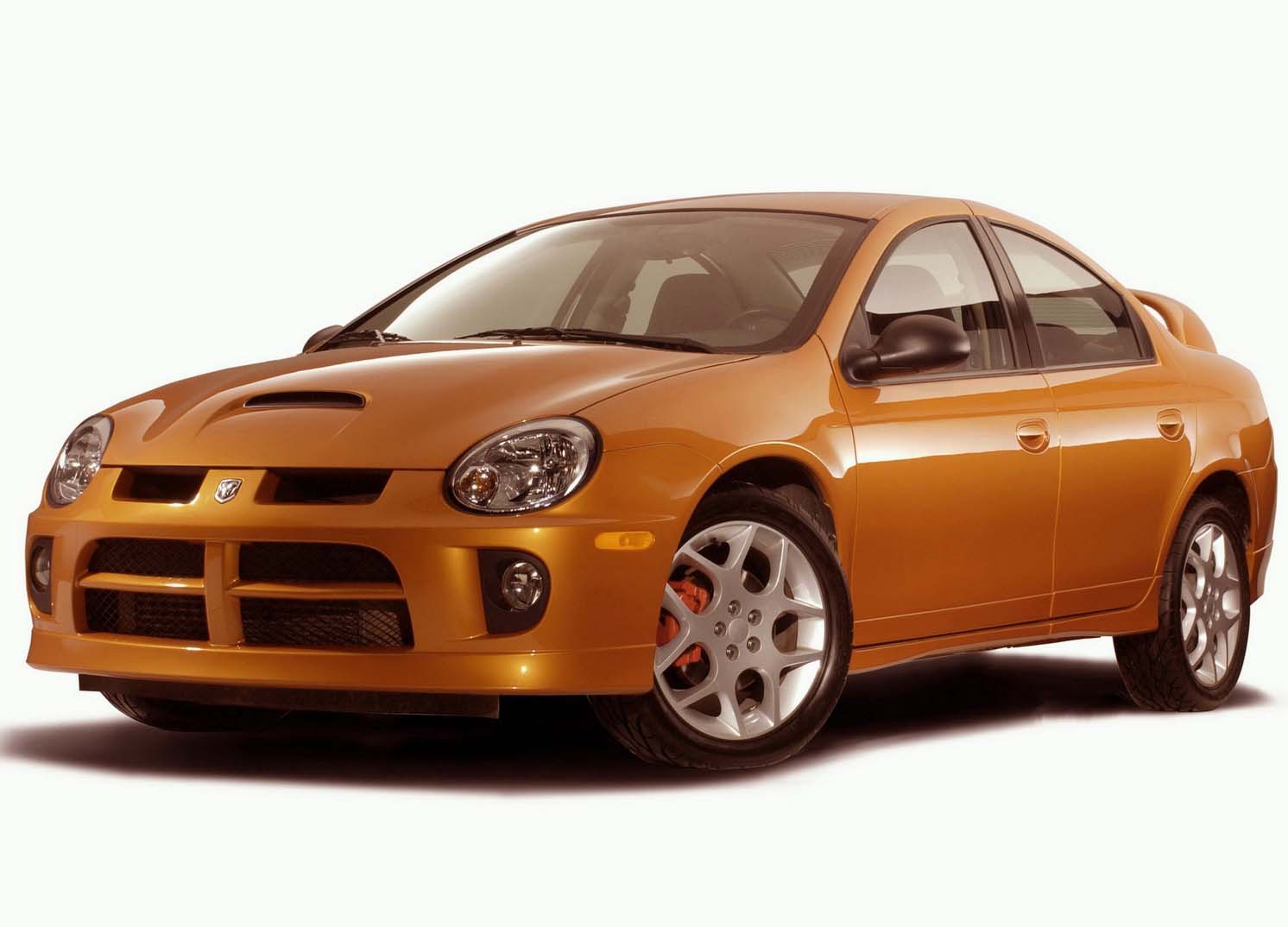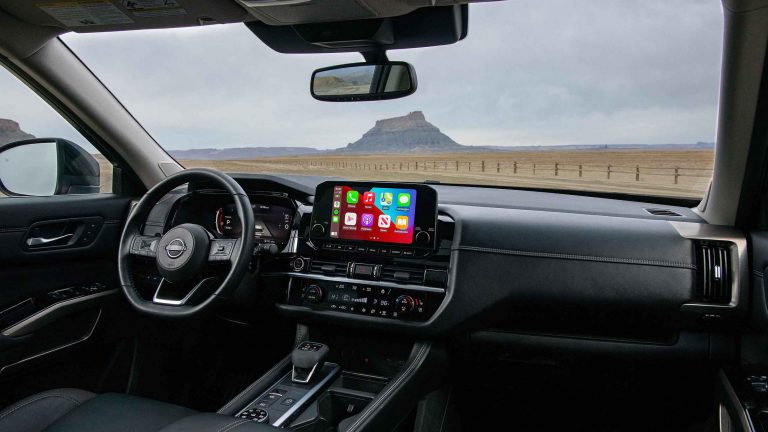The Dodge Neon – A Fighter (Detailed Review & History)
The Impact of the Dodge Neon
When Chrysler debuted the Dodge Neon, it was intended to help the
American company and give the American public a new choice of car in the compact sedan segment. The car was introduced as a breath of fresh air. A compact sedan that was designed and made in America.
It was a moderately successful car that offered buyers a performance-oriented car at a very low budget. The first Dodge Neon that was introduced was capable of doing a zero to sixty in eight seconds! Over 10 years, Dodge introduced a car that defied expectations.
1994-1998: The Start of the Neon
The first 1994 Dodge Neon came as a surprise to the market. It was a car that was economical and came with a powerful engine. The first cars came with the typical styling from the 90s. A rounded design, with some of the most bizarre-looking headlamps. You got power steering and tachometer as standard on the higher trims but as optional on the base trim.
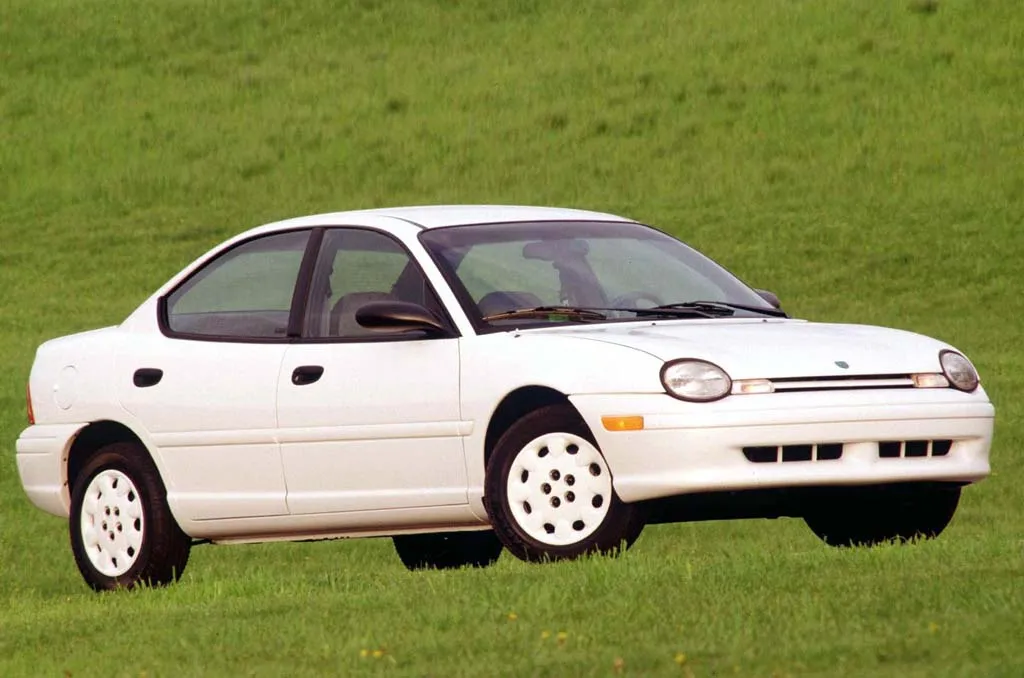
The biggest difference was under the hood, the 1998 Dodge Neon offered a 2.0-liter, 136 bhp engine. This engine trim was provided on the base model and the higher end one came equipped with a 16-valve engine that churned out 150 bhp.
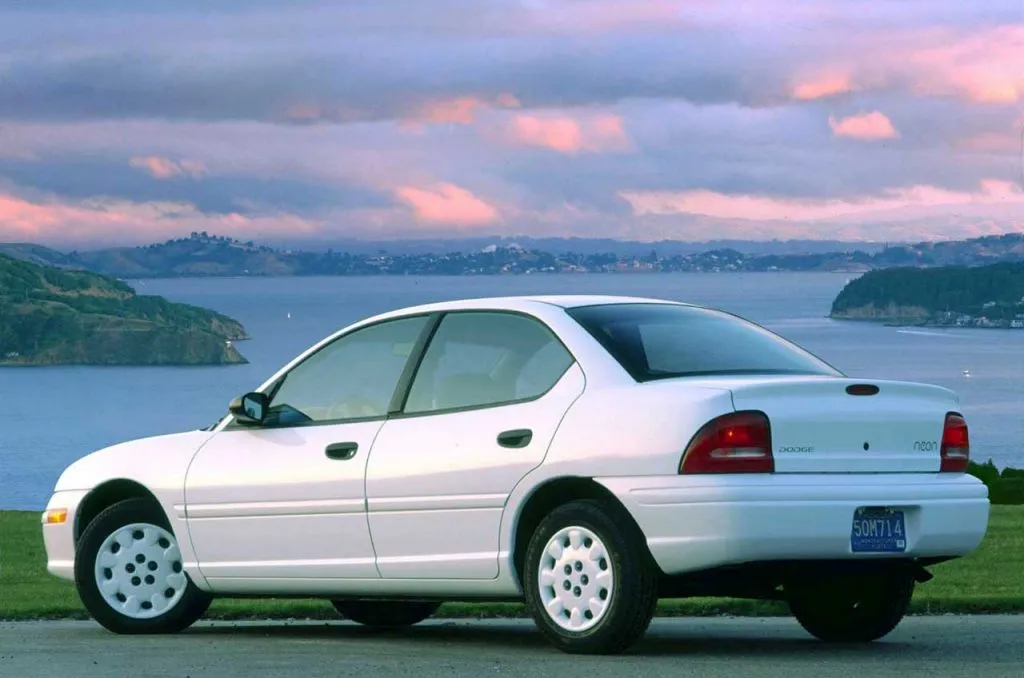
The sheer capacity of the powertrain firmly put the economical sedan in the hot hatchback territory, when it came down to performance. As a result, the car was quite popular among the economical crowd that wanted a little kick out of their cars.
1999-2002: The Second Generation
The second generation of the Dodge Neon came in 1999 but was marketed as a 2000 model. While Dodge Neon’s idea was on point the problem lay in the rising number of options that entered the market at the time. It struggled to lay down a footprint in the market as the foreign entries severely undercut the Dodge Neon’s features and cost.
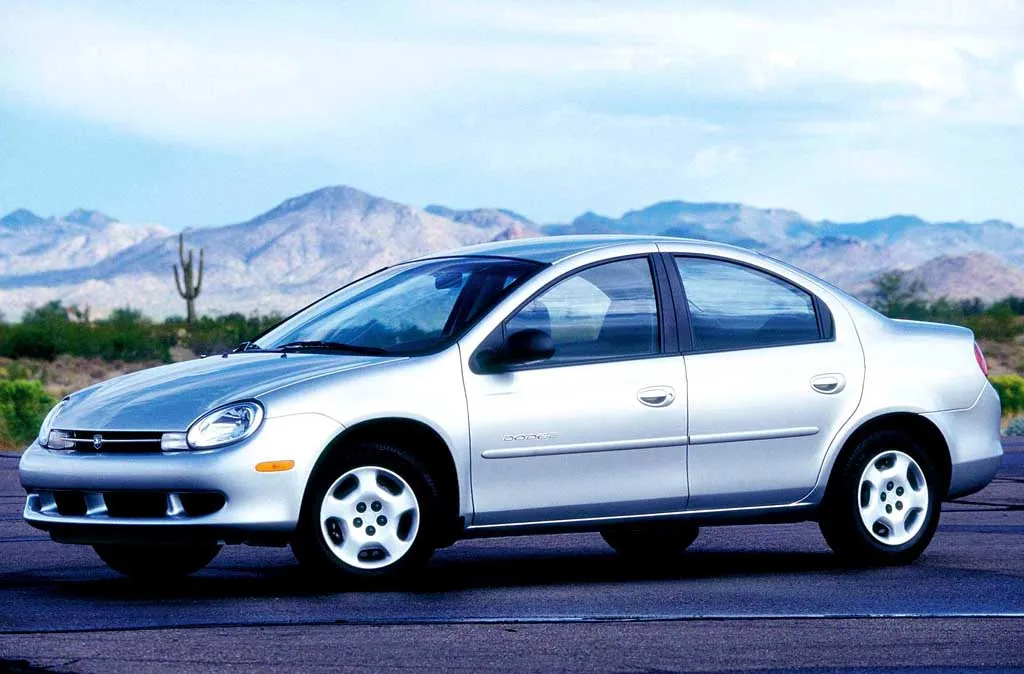
Despite that, the 2001 Dodge Neon and the 2002 Dodge Neon were still good upgrades. The company enhanced the design, adding a new narrower grille under the bonnet along with a fatter grille on the front bumper. The design change was much needed and in line with what the new millennia brought for the cars.
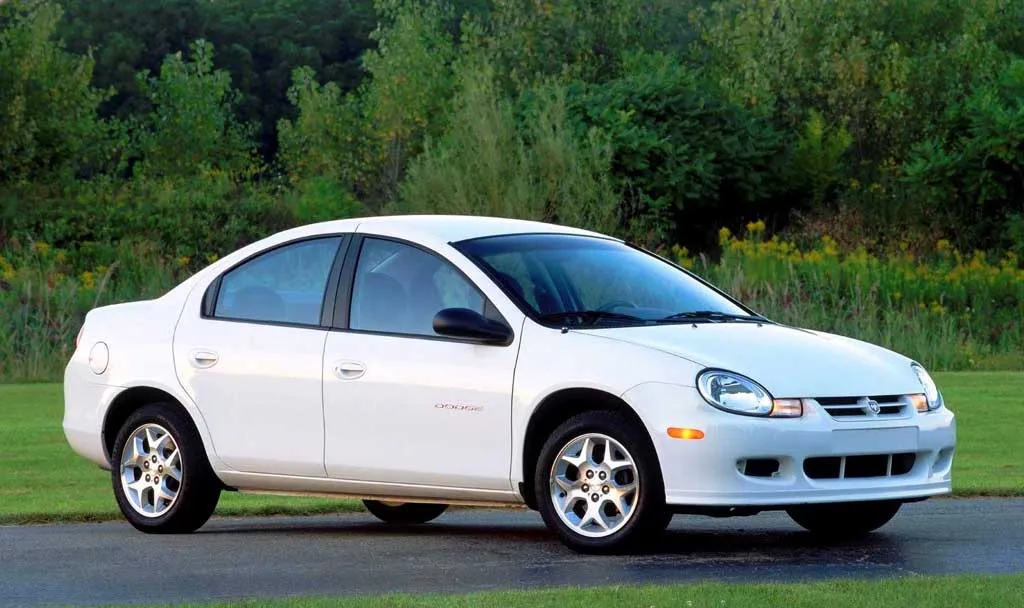
The interiors were also upgraded, with Chrysler giving the dashboard a much-needed makeover. Despite the change, you did not get power windows as standard but they only came as options on the higher-end trims. The Dodge Neon 2001 and 2002 used cheap plastic for the dash, door panels, and the center stack. The new cars also got rid of the frameless windows that were much loved in the previous generation.
In the engine department, Chrysler offered the same 1.6-liter engine as standard and offered two new 2.0-liter units as upgradable options. The top-end engine model was now churning out a pretty figure of 152 bhp. Chrysler also got rid of the 5-speed manual in favor of a 4-speed automatic.
2003-2005: The Last Song
The Dodge Neon
In 2003, the final generation of the Dodge Neon came around. This time with slightly more changes than before. The front of the car was completely re-designed from the 2003 Dodge Neon onwards. The fascia now came with a cross-hair style grille.
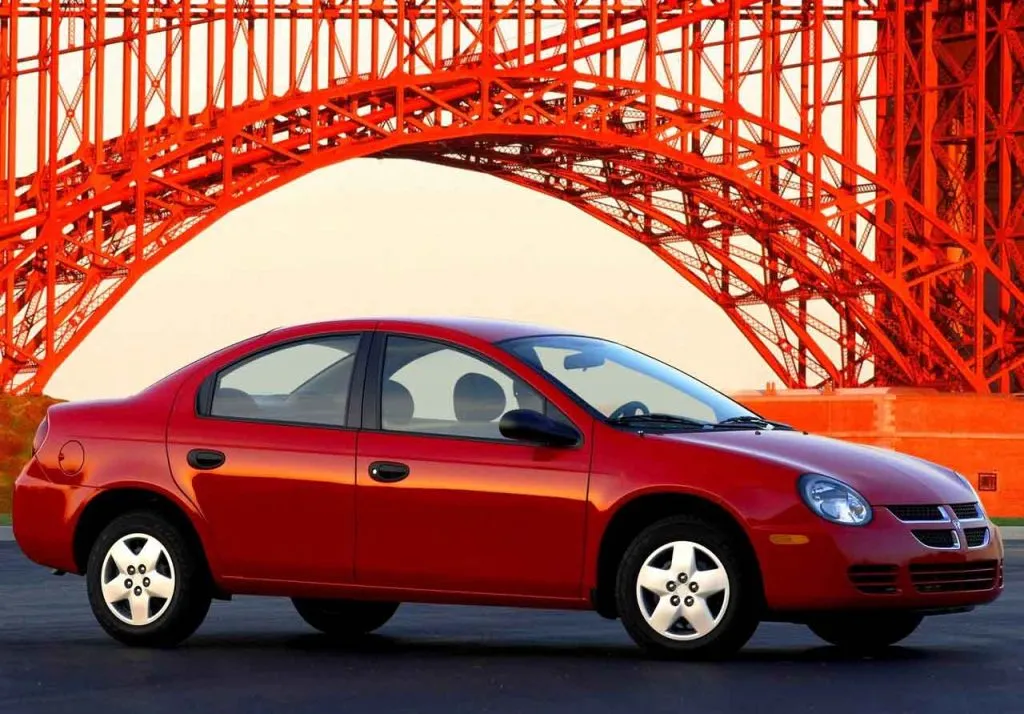
The formerly clunky headlamps had now become its identity and were retained for the last generation of the Dodge Neon cars. The Dodge Neon was now being rebranded in other countries and sold off. In places such as Canada, it was known as the Dodge 2.0 SXT, whereas for the American market it was known as the 2005 Dodge Neon SXT. The SXT got aluminum wheels, a sunroof, and a deck as standard.

One look at the 2004 Dodge Neon or the 2005 Dodge Neon and it was apparent that Chrysler wanted to cut down on the MSRP of the car badly. You could find a lot of cheaper parts on the car and was the compromise they made in a bid to offer better performance. It was sold for less than 20,000 USD at the time of launch! Even air conditioning was offered as an option instead of standard.
The 2.0-liter naturally aspirated engine now came as standard and the 5-speed manual transmission was reintroduced. The company still offered the 4-speed automatic as an option.
The Dodge Neon SRT
While the standard Dodge Neon did not wow customers or did particularly well in the markets, the Dodge Neon SRT was a whole different breed of car. The sports-compact car was a segment that the Japanese and the Europeans dominated and Dodge wanted to change that.
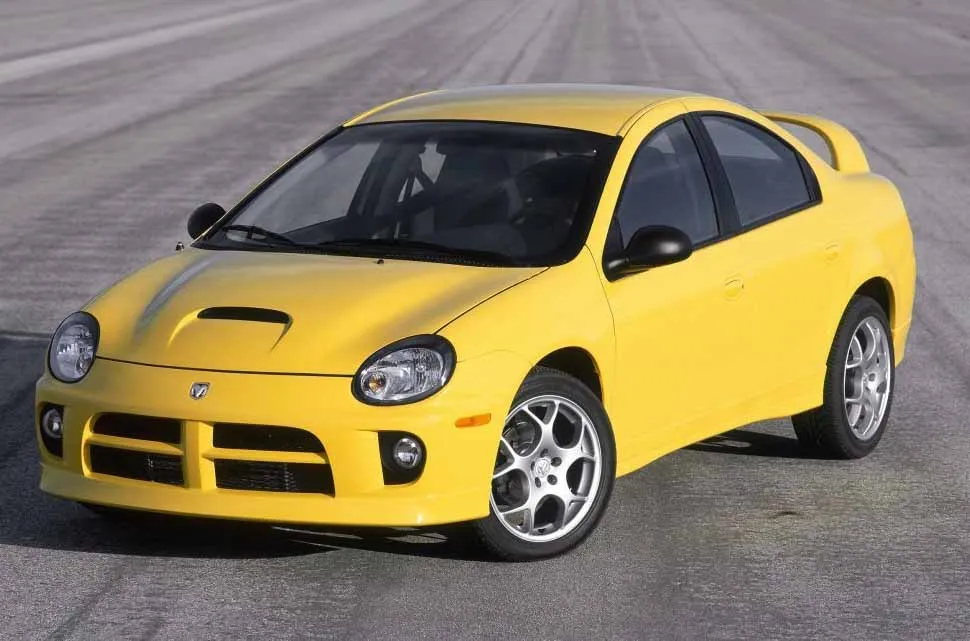
Dodge Neon SRT 4 came with a wider front bumper that housed four large slots, which were similar to that of the Viper. Foglamps were added and the hood had an air-intake opening that warned onlookers of its differences.
The car was dedicated to its sporting look and had a big oversized wing at the back, which sadly did not serve any purpose and was the first thing the owners replaced when they purchased the car.
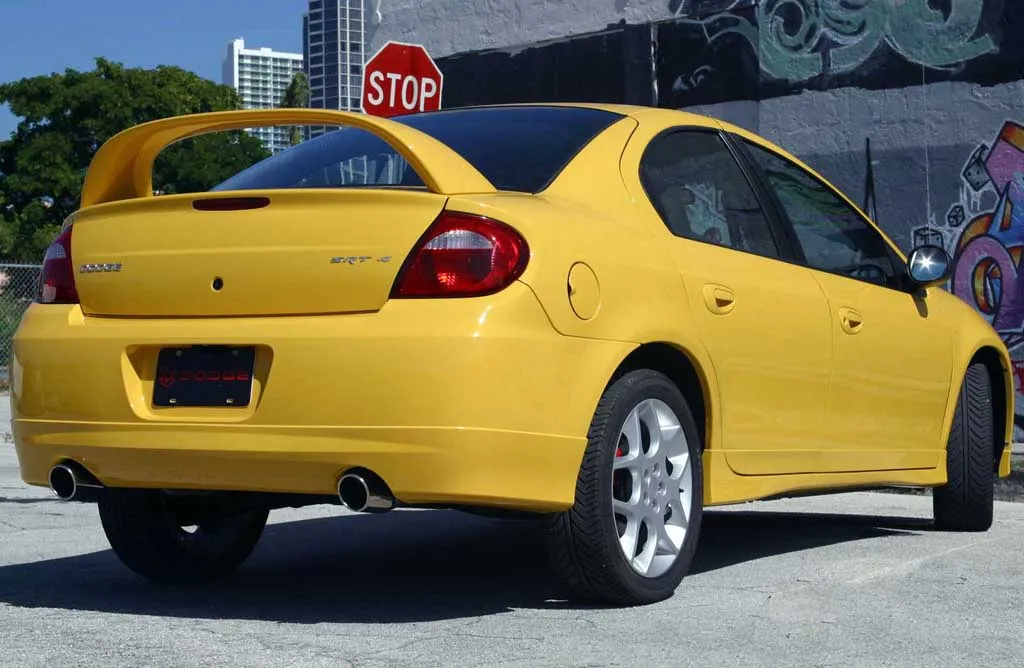
The main difference lay under the hood, where Dodge offered a new 2.4-liter turbocharged engine, which came with a 5-speed manual transmission. The engine delivered a modest 215 bhp. In 2004, Dodge Neon SRT 4 hp was boosted to 230 bhp and the transmission even got a limited slip-differential to add to its sporty nature.
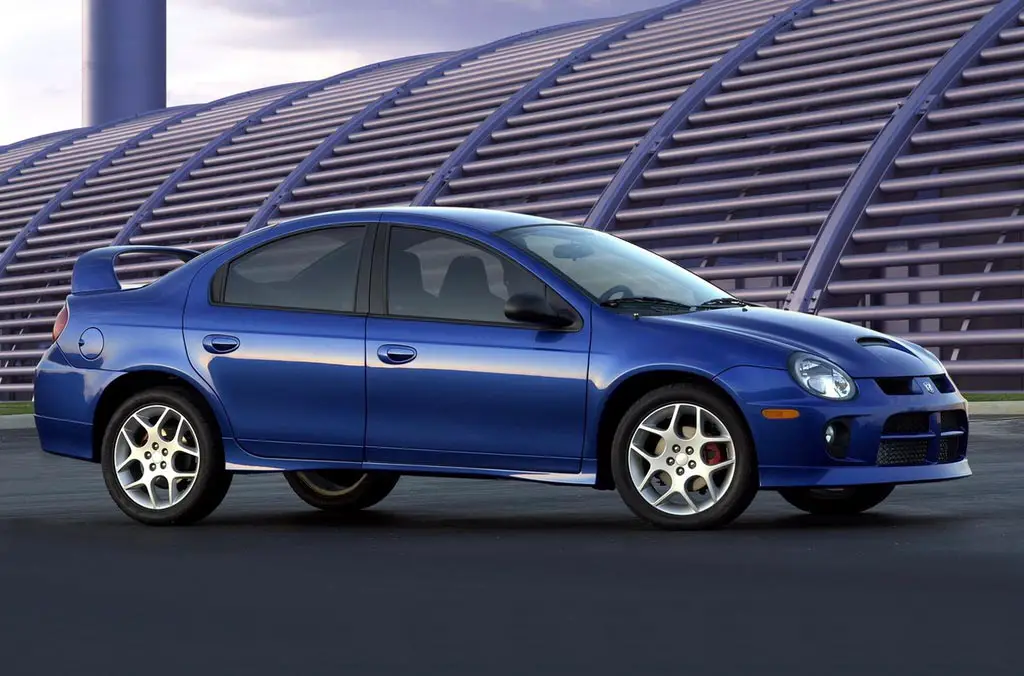
The 2004 Dodge Neon SRT also came with ABS on all four wheels and 17-inch performance tires. It was the fastest Dodge on offer, second only to the legendary Viper.
Conclusion
The Dodge Neon was a car that was meant to change the trajectory of the compact sports sedan market in the United States. However, due to the increasing number of imports, it simply could not hold its ground. Despite that, the Dodge Neon remains a great car that comes in at a steal of a price. The sheer economical factor that surrounds it and the powerful engine under the hood means that you get a lot more bang for your buck than any other offering in the price range. There might not be a better money-saving deal left these days as compared to that of a Dodge Neon.

